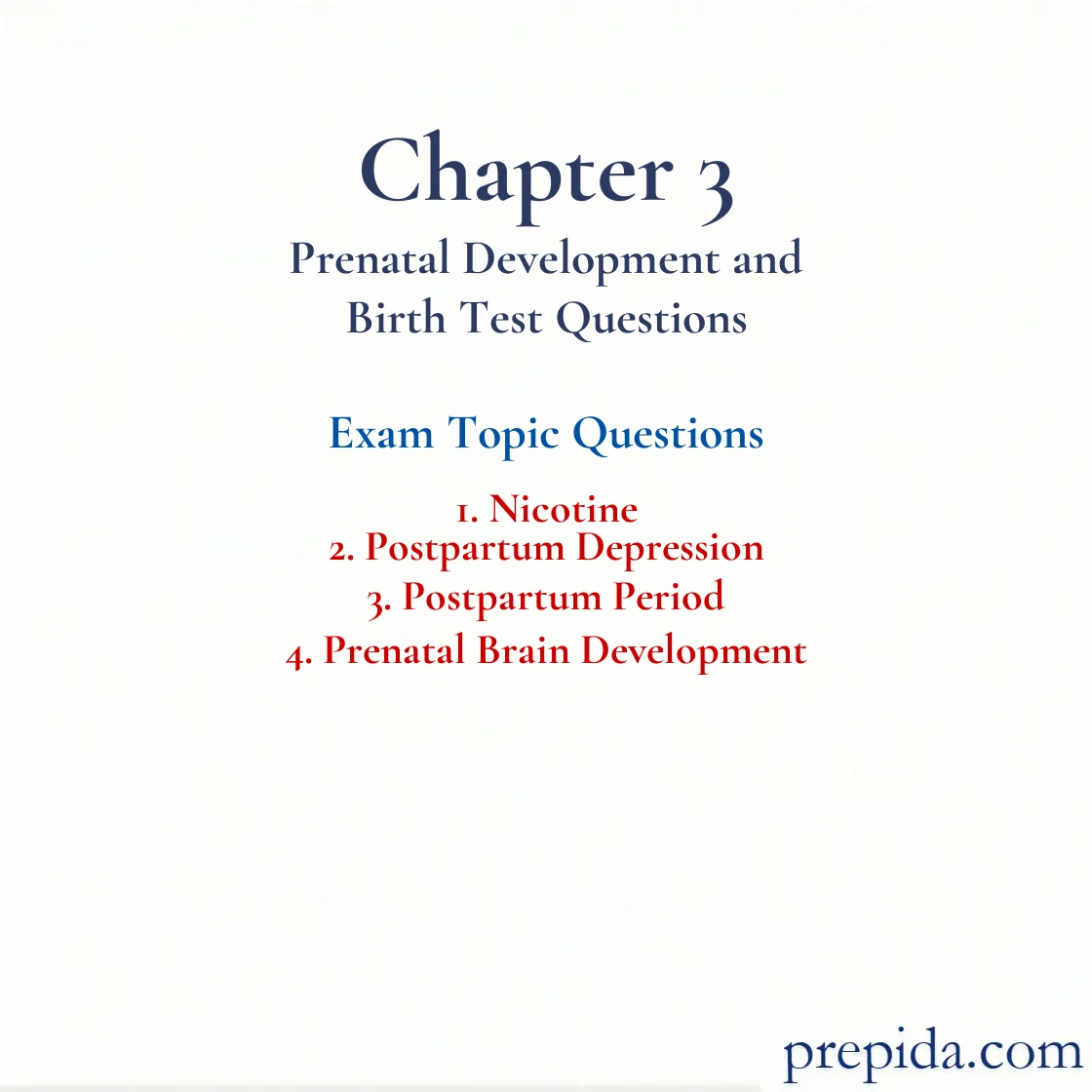
Alicia is pregnant and is a heavy smoker. Which of the following risks does her baby face?
- facial and limb deformities
- sudden infant death syndrome
- cognitive defects
- tremors and increased general irritability
Sudden Infant Death Syndrome (SIDS): A condition that occurs when an infant stops breathing, usually during the night, and suddenly dies without an apparent cause.
According to research, which of the following risks is linked to environmental tobacco smoke?
- reduced head circumference in newborns
- withdrawal symptoms in newborns
- lower quality of reflexes at one month of age in newborns
- impaired connectivity of the thalamus and prefrontal cortex in newborns
Kate is addicted to smoking. Even though her doctor advises her to quit smoking during her pregnancy, she continues smoking. Which of the following is a possible consequence of her action?
- Her baby will suffer from attention deficit hyperactivity disorder.
- Her baby will have higher than average birth weight.
- Her baby will suffer from autism.
- Her baby will suffer from schizophrenia.
Attention Deficit Hyperactivity Disorder (ADHD): A disability in which children consistently show one or more of the following characteristics: (1) inattention, (2) hyperactivity, and (3) impulsivity.
Mariah has given birth to a baby girl. One month after delivery, she is still experiencing very strong feelings of sadness and anxiety. She is so morose that she is having trouble coping with daily tasks. Mariah is most likely suffering from
- posttraumatic stress disorder.
- postpartum blues.
- paranoid schizophrenia.
- postpartum depression.
Postpartum Depression: A condition experienced by women who have such strong feelings of sadness, anxiety, or despair that they have trouble coping with daily tasks during the postpartum period.
When the ________ is delivered, estrogen and progesterone levels drop steeply and remain low until the ovaries start producing hormones again.
- baby
- placenta
- embryo
- blastocyst
Placenta: A prenatal life-support system that consists of a disk-shaped group of tissues in which small blood vessels from the mother and offspring intertwine.
The long hollow tube formed by the mother's nervous system and located on the embryo's back is called the ________.
- embryonal tube
- neural tube
- anacephal tube
- fetal tube
Cells moving outward from their original point to their appropriate locations and creating different levels, structures, and regions of the brain is called
- neurogenesis.
- neuronal migration.
- neuronal connectivity.
- neural revitalization.
Neurons: Nerve cells that handle information processing at the cellular level in the brain.
Neural connectivity begins at around the
- 20th prenatal week.
- 23rd prenatal week.
- 26th prenatal week.
- 29th prenatal week.
Fetal Period: Lasting about seven months, the prenatal period between two months after conception and birth in typical pregnancies.
Sarah is a 20-year-old college student who is paralyzed from the waist down. She can walk with difficulty using crutches but prefers her wheelchair. Sarah's condition is due to a birth defect that occurs when the neural tube fails to close during gestation. Which of the following birth defects does Sarah most likely have?
- anencephaly
- neuronal migration
- multiple sclerosis
- spina bifida
Which of the following statements best distinguishes neurogenesis from neuronal migration?
- Neurogenesis refers to the closure of the neural tube 27 days after conception, whereas neuronal migration refers to the formation of the neural tube 18 days after conception.
- Neurogenesis is the occurrence of connections between neurons postnatally, whereas neuronal migration is the formation of the blastocyst and trophoblast.
- Neurogenesis occurs 24-30 hours after fertilization, whereas neuronal migration occurs during the first two weeks after conception.
- Neurogenesis refers to the formation of new neurons, whereas neuronal migration refers to the movement of cells outward to create the different levels, structures, and regions of the brain.
Genes: Units of hereditary information composed of DNA. Genes help cells to reproduce themselves and help manufacture the proteins that maintain life.
The generation of new neurons that begins to take place in the fifth prenatal week and occurs throughout pregnancy is called
- neurogenesis.
- neuronal migration.
- neuronal connectivity.
- neural revitalization.
Neurogenesis: The generation of new neurons.
________ and ________ are the two birth defects that occur when the neural tube fails to close 27 days after conception.
- Down syndrome; Tay-Sachs disease
- Trisomy 13; trisomy 18
- Spina bifida; anencephaly
- ADHD; autism
Sophia has just learned that she is pregnant. Her doctor advises a change in her diet to avoid any potential neural tube defects. Which of the following does her doctor recommend?
- consuming food rich in vitamin C
- consuming adequate amounts of the B vitamin folic acid
- consuming additional calcium supplements
- consuming additional iron supplements